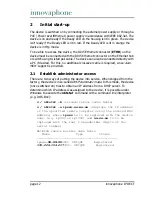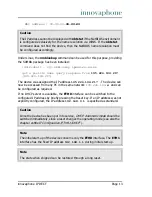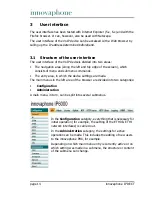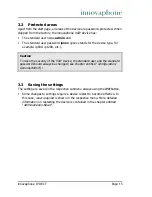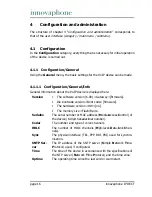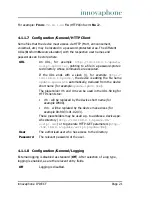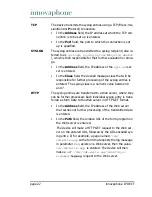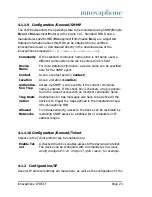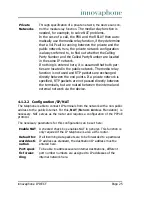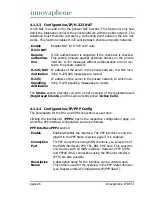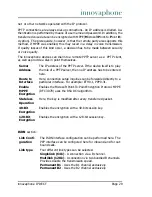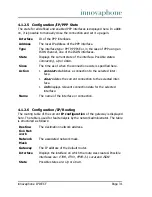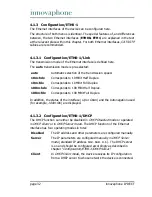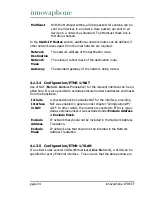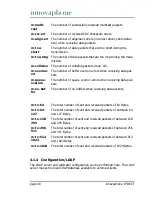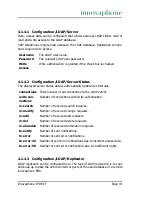
page 26
innovaphone IP DECT
4.1.2.3 Configuration/IP/H.323 NAT
H.323 NAT is an add-on for the general NAT function. This function is only nee-
ded if the telephone connects the private network with the public network. The
telephone must therefore represent a connecting point between the two net-
works. This function enables H.323 calls between private and public networks.
The
Status
section provides you with a brief overview of the registered users
(
Registered Clients
) and the calls currently active (
Active Calls
).
4.1.2.4 Configuration/IP/PPP Config
The parameters for the DSL and VPN connections are set here.
Clicking the interface ID (
PPPn
) opens the respective configuration page, on
which the PPP interface configuration can be performed.
PPP Interface PPP
n
section:
Enable
H.323 NAT
Enables NAT for H.323 VoIP calls.
Require
authentica-
tion
H.323 authentication is obligatory if the check box is checked.
This setting protects against externals attacks on the private
network. H.323 messages without authentication are not rou-
ted to the private network.
H.225/RAS
destination
IP address of the server in the private network, to which inco-
ming H.225/RAS messages are routed.
H.225/
Signalling
destination
IP address of the server in the private network, to which inco-
ming H.225/signalling messages are routed.
Enable
Enables/disables the interface. The PPP interface is only dis-
played in the PPP State overview page if it is enabled.
Connection
Port
For PPP connections using ISDN channels, you select one of
the ISDN interfaces (PPP, TEL
,
BRI, PRI) here. This concerns
only devices with an ISDN interface. However, PPTP (VPN)
and PPPoE (DSL) connections using the Ethernet interface
(ETH) are also possible.
Descriptive
Name
A descriptive name for the interface can be entered here.
This name is used for the overview in the PPP State submenu
(see chapter entitled “
Configuration/IP/PPP State
”).

